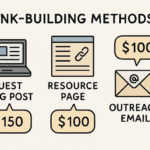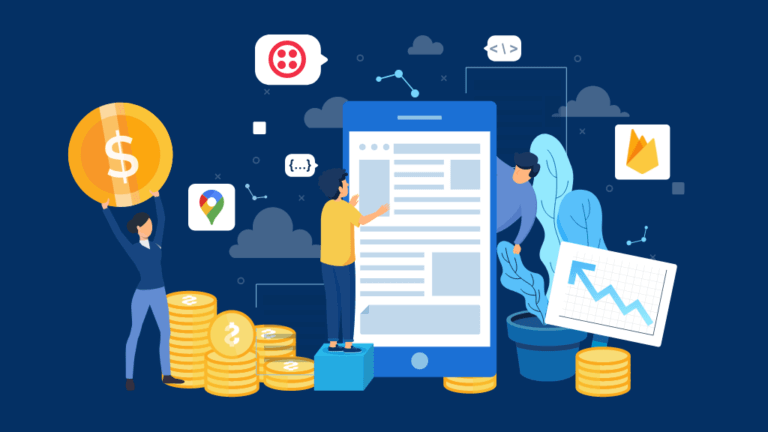Most founders approach app development with a number in mind, often based on what a freelancer quoted or what a competitor claimed they spent. But the real cost of building an app usually turns out to be higher. Not because someone overcharged, but because there are layers of expenses that do not appear in the initial proposal. In this post, we will unpack the hidden costs that quietly drain budgets, delay timelines, and surprise even the most prepared teams.
1. Planning Time That Doesn’t Go on the Invoice
Before any code is written, there’s a phase that quietly eats up time: planning. This includes discovery sessions, strategy meetings, technical documentation, and back-and-forth alignment on goals. Most teams do not charge separately for every meeting, but the time investment is real. Founders often overlook how delays in decision-making or unclear requirements can extend this phase and indirectly increase costs. The smoother the planning, the fewer surprises later on.
2. Third-Party Services and APIs
Most apps rely on external services to function properly, such as payment gateways, location services, messaging tools, or user analytics. These tools often come with free or trial versions, but costs begin to rise as your user base grows. Some features may only be available on paid plans, and usage-based pricing can scale quickly. Without accounting for these recurring expenses upfront, teams may find themselves locked into tools that quietly stretch the budget.
3. UI and UX Revisions Beyond the Scope
Design is rarely a one-and-done task. Even after initial wireframes and mockups are approved, revisions often follow. These changes might come from user feedback, internal reviews, or evolving brand guidelines. While some updates are minor, others may require redesigning entire screens or rethinking user flows. Unless clearly defined in the contract, additional rounds of design work can increase both time and cost. Working with experienced designers helps reduce guesswork and minimize revision cycles.
4. App Store Fees and Compliance Prep
Publishing an app is not free. Apple charges an annual fee for a developer account, while Google Play requires a one-time registration cost. Beyond that, preparing your app to meet store guidelines often involves extra work, such as privacy disclosures, data handling policies, and content restrictions. For apps handling sensitive data, additional compliance requirements like GDPR or HIPAA can introduce legal consultations and audits. These steps may seem small individually but can create a noticeable impact on the overall budget.
5. Post-Launch Support and Updates
Launching the app is not the finish line. Once it is live, users report bugs, operating systems release updates, and new feature requests start rolling in. Without a plan for ongoing support, these issues can pile up quickly. Many teams offer monthly maintenance retainers, which should be factored into the long-term budget. Ignoring post-launch costs can lead to performance issues, outdated features, or a poor user experience over time.
6. Infrastructure and Hosting Costs
Every app needs a reliable backend to function smoothly. This includes servers, databases, file storage, and performance monitoring tools. Platforms like AWS, Google Cloud, or Firebase offer scalable solutions, but their pricing increases with traffic and data usage. Apps with real-time features, high media content, or large user bases often require additional resources. These ongoing infrastructure costs are easy to underestimate but play a critical role in app performance and user satisfaction.
7. Regional Pricing Variations
The cost of app development often depends on where your development team is based. Rates differ across regions due to labor costs, taxes, and industry practices. For example, a mobile app development company in Dubai may offer competitive pricing for businesses targeting the Middle Eastern market, while a mobile app development company in Dallas might focus more on scaling enterprise-grade apps in the United States. Understanding these differences can help you choose a partner that fits both your budget and your goals.
8. Internal Team Time and Communication Gaps
Even if you outsource development, your internal team still needs to be involved. Reviewing progress, making decisions, writing content, and giving timely feedback all require hours from your side. When founders or stakeholders delay responses or give unclear input, it slows everything down and adds hidden cost. These delays can also lead to scope changes, misalignment, and rushed fixes later.
9. Rebuilding Poor Early Decisions
One of the most expensive hidden costs is redoing something that was done too quickly in the beginning. Whether it’s choosing the wrong tech stack, building unnecessary features, or skipping documentation, these shortcuts often lead to rebuilds. A rushed MVP can be fine, but cutting corners without a plan for future growth usually ends up costing more later. Early mistakes often surface months after launch, right when you’re trying to scale.
10. Marketing and User Acquisition Tools
Building the app is just one part of the journey. Getting users to download and engage with it often requires a separate marketing budget. This includes spending on tools like email automation platforms, mobile attribution services, push notification services, and app analytics platforms. Even simple campaigns need assets like banners, landing pages, and social creatives, which may require hiring designers or marketers. These supporting tools and efforts can match or even exceed the original development budget over time.
11. Legal and Documentation Overhead
If your app collects user data, allows transactions, or stores sensitive information, there are legal responsibilities involved. Privacy policies, terms of service, and data usage disclosures are not optional. Some businesses need to involve legal advisors to stay compliant with local laws or app store guidelines. Contracts, NDAs, and user agreements also take time and resources to prepare. These elements may not be included in development estimates but are part of a complete app launch.
Conclusion
App development is rarely just about writing code. The hidden costs such as planning time, third-party tools, revisions, infrastructure, and compliance can quietly stretch your budget if they are not considered from the start. Understanding where these expenses come from allows you to make smarter decisions and avoid surprises later. If you are budgeting for an app, treat these elements as part of the actual cost, not as optional extras. A clear and realistic plan today can save time, money, and effort down the line.
YOU MAY ALSO LIKE: The Rise of Context-Aware Mobile Apps — What It Means for the Future of User Experience



















